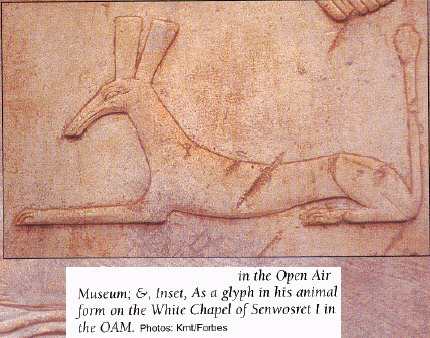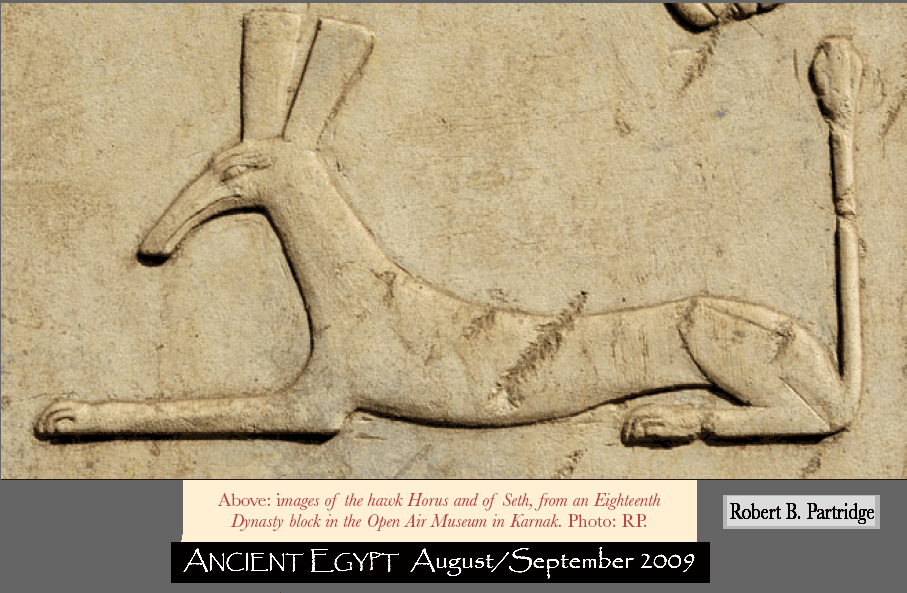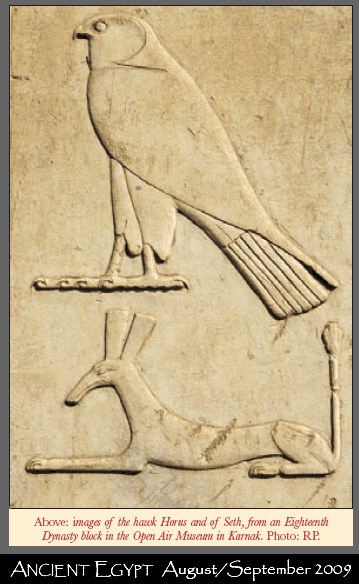|
Putting this piece in further context is Eugene Cruz-Uribe, who wrote for Journal of the American Research Center in Egypt, "Seth, God of Power and Might", issue 45:
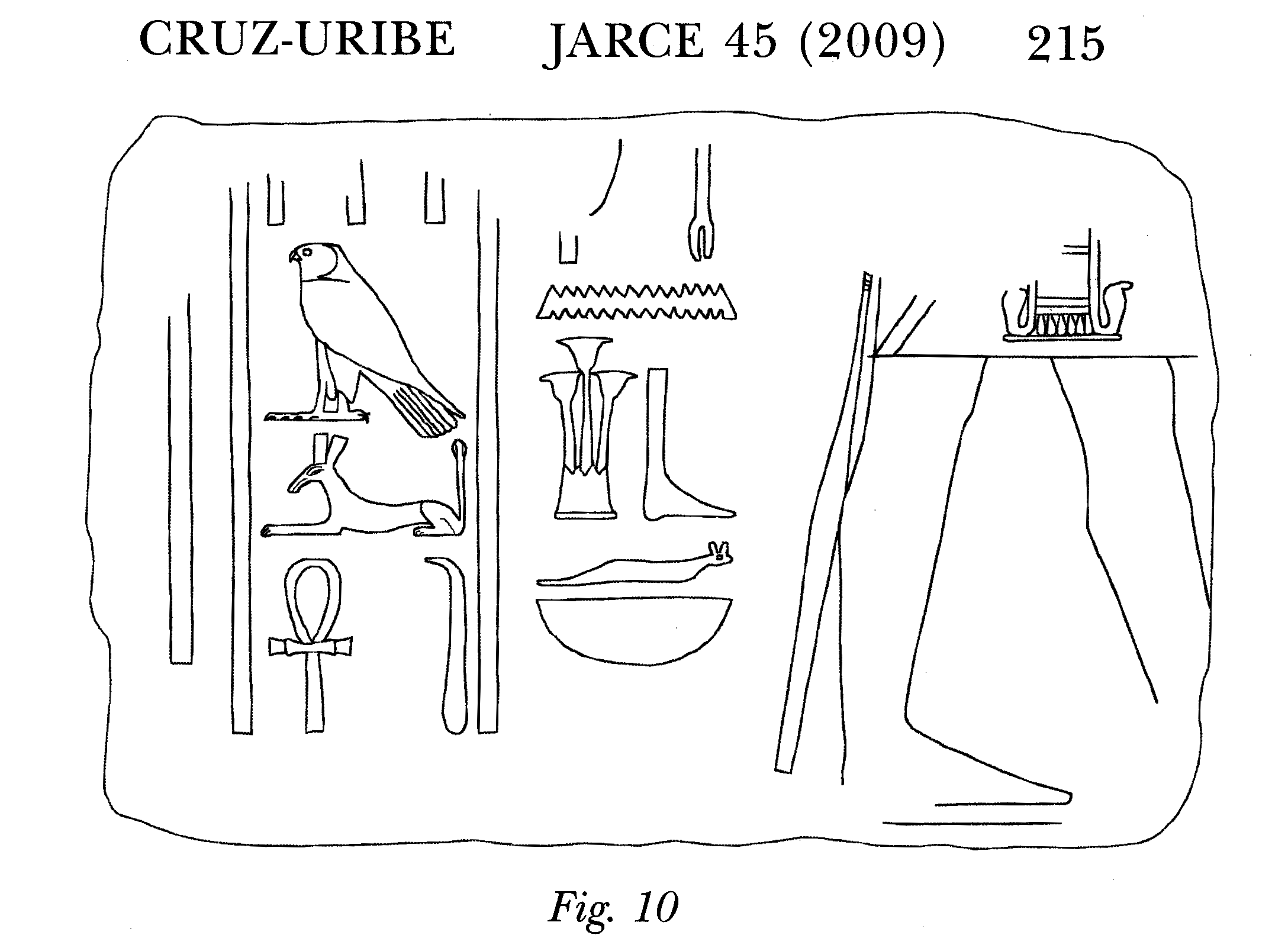
The hieroglyphs "may read '[year]s of Horus and Seth, living.'"
There's a similar fragment in the Open Air Museum, also given a line drawing by Cruz-Uribe:
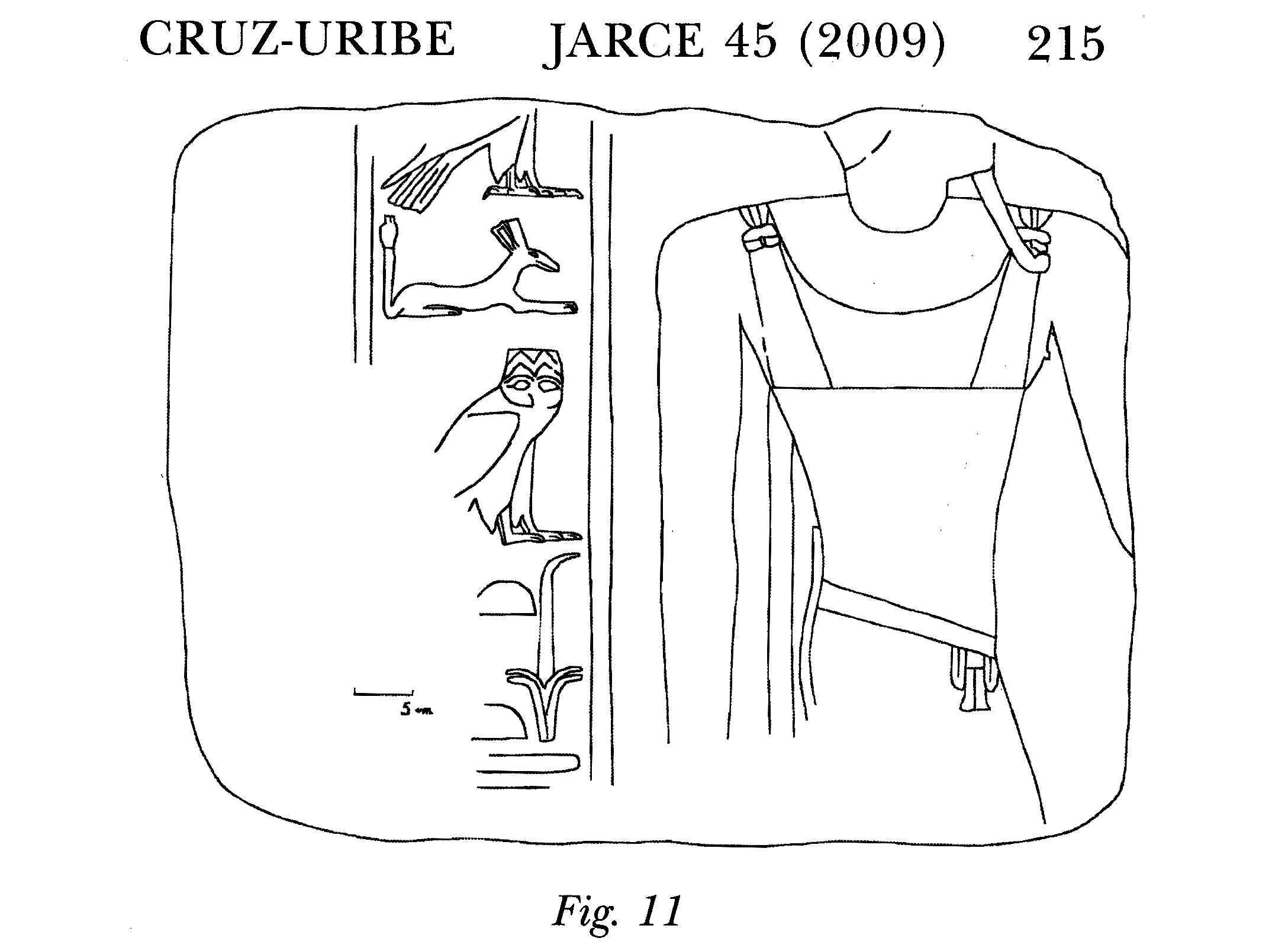
"It shows a partial figure of a king with a portion of an inscription behind.
It reads '[...H]orus and Seth in the kingship of the two lan[ds...].'"
Cruz says these two come "from the Karnak group in the open air block yard south of the main portion of the temple and north of Khonsu temple." (page 214) From his line drawings, we can see that these are fragments. The White Chapel has been reconstructed, so I'm inclined to think these are not from this chapel.

My trace of the Set glyph...
The photographer Heidi Kontkanon found another example of hieroglyphs featuring Set at the Karnak Open Air Museum:
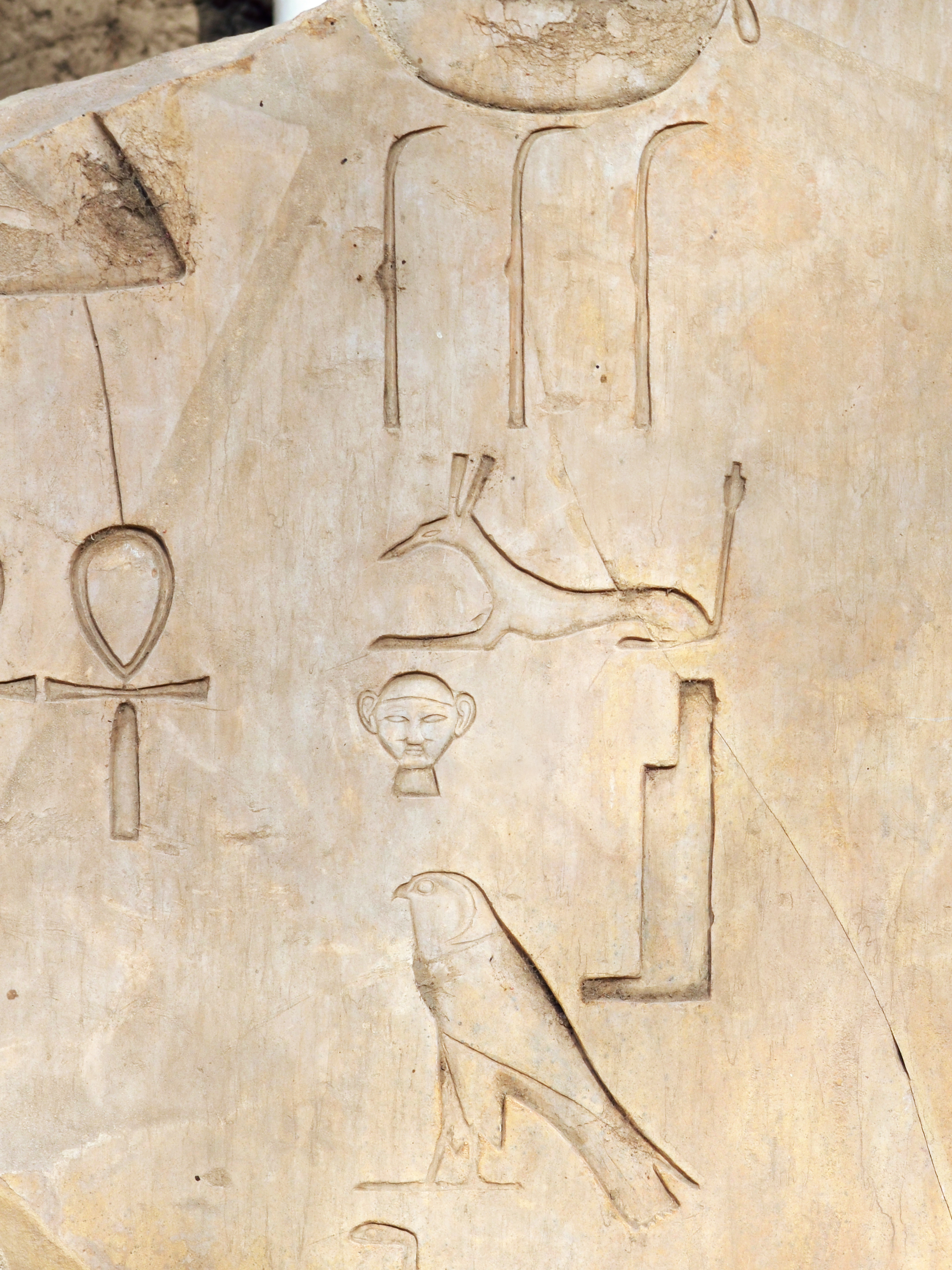
At the top are three "renpet" glyphs, meaning years. I was able to find out more about this in Cruz-Uribe's article. This is a broken fragment, which looks very much like part of this lintel he describes:
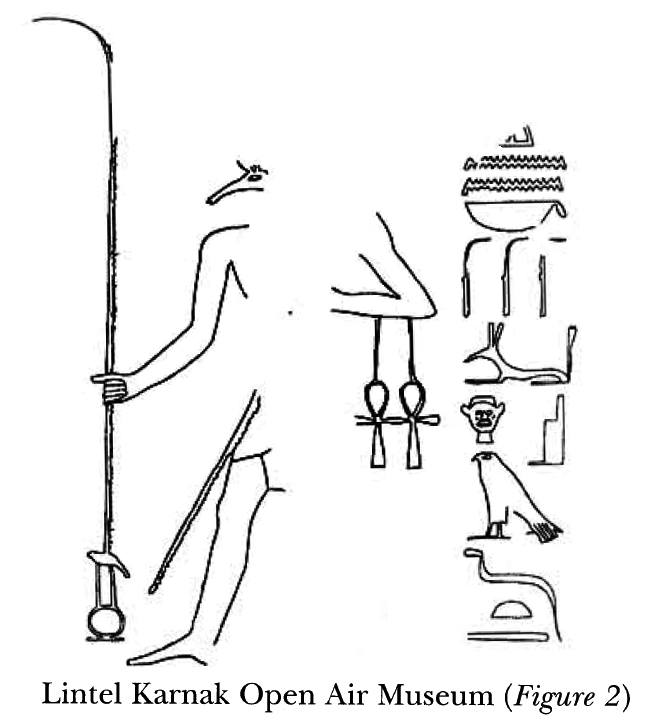
Lintel Karnak Open Air Museum (Figure 2)...
"Excavated in Karnak as fill, this sandstone lintel shows a standing Amun, lord of the thrones of the two lands giving life to Sesostris I. Amun wears the double feathered crown and holds a was-scepter. Sesostris wears the red crown and holds a stick and mace. Behind the king is the personified ka-standard with his Horus name 'Living of Births.' To the left is a figure of a falcon headed Montu holding the year-sign in each hand. He says 'I have given to you years forever and ever.' Behind him is a standing figure of Nekhbet holding a pair of year signs who says 'I have given to you all life and stability like Re forever.' To the right of the figure is a broken figure of Set. In one hand he holds a year sign and the other is a year sign with a tadpole-double fingers and shen-sign (indicating tens of thousands and hundreds of thousands of years united). He says 'I have given to you the years of Seth upon the throne of Horus forever.' This is followed on the right by a standing female deity (probably Wadjet) holding the same year-staffs as Seth." (Ibid, pages 21-211)
What is seen in the above photo crop is "THE YEARS OF SET UPON THE THRONE OF HORUS..."
|
